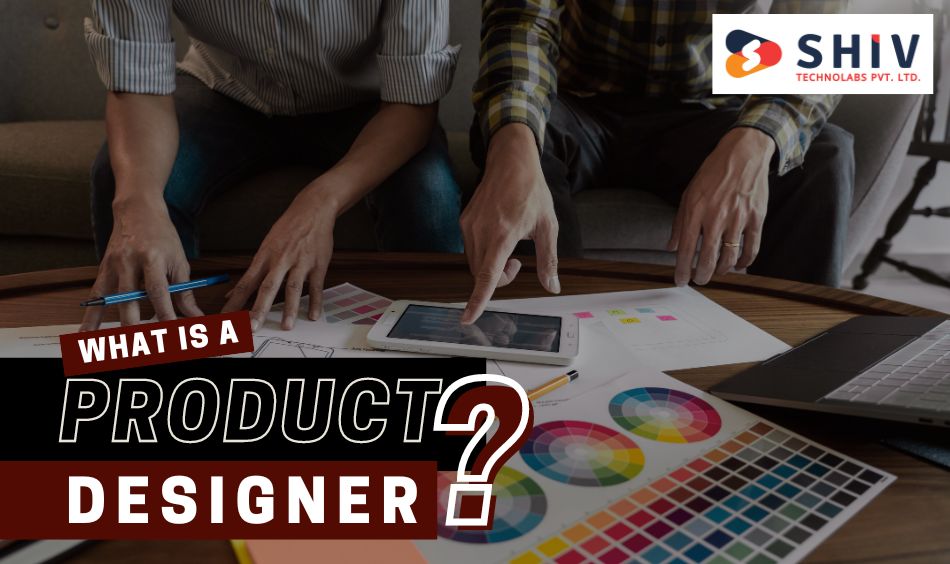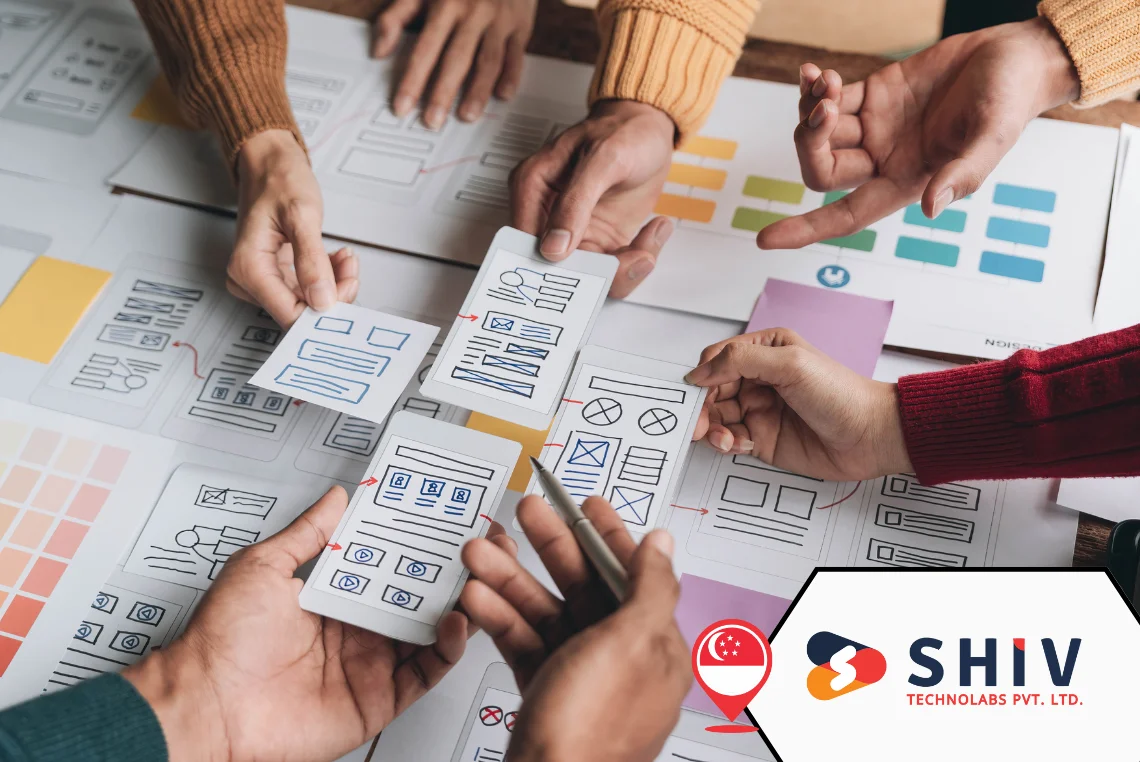Table of Contents
The fields of UX design and product design have become essential in the tech industry, shaping the way users interact with digital products. Though these roles share some similarities, they have distinct differences in focus, responsibilities, and skill sets. Understanding these nuances can help companies make informed hiring decisions and professionals choose the right career path.
What is a UX Designer?

A UX (User Experience) Designer focuses on creating a positive experience for users when they interact with a product or service. Their primary goal is to make the product user-friendly, intuitive, and enjoyable to use. UX Designers conduct user research, create personas, design wireframes and prototypes, and conduct usability testing. They work closely with users to understand their needs, behaviors, and pain points, translating this information into design solutions.
# Responsibilities of a UX Designer:
- User Research: Conducting interviews, surveys, and usability tests to gather insights about user needs and behaviors.
- Creating Personas: Developing detailed profiles of target users to guide design decisions.
- Wireframing and Prototyping: Designing low-fidelity sketches and interactive prototypes to visualize the user flow and interface.
- Usability Testing: Testing the product with real users to identify issues and gather feedback.
- Information Architecture: Organizing content and features to create a logical and intuitive structure.
- Interaction Design: Designing the interactions and animations that improve the user experience.
- Collaborating with Developers: Working closely with developers to make sure the design is implemented correctly.
Also Read:- Top 12 Reasons to use Figma as a UI/UX Design Tool
What is a Product Designer?

A Product Designer has a broader role, encompassing aspects of UX design, UI (User Interface) design, and product management. They are responsible for the entire lifecycle of a product, from conception to launch and beyond. Product Designers focus on both the functionality and aesthetics of the product, making sure it meets user needs and business goals. They are involved in defining the product vision, creating design solutions, and collaborating with cross-functional teams.
# Responsibilities of a Product Designer:
- Product Vision: Defining the overall vision and strategy for the product.
- User Research: Conducting research to understand user needs and market trends.
- UI Design: Creating visually appealing and functional interfaces.
- Prototyping: Building interactive prototypes to test ideas and gather feedback.
- Collaborating with Stakeholders: Working with product managers, developers, and other stakeholders to align on goals and requirements.
- Iterating on Designs: Continuously improving the design based on user feedback and testing.
- Maintaining Consistency: Making sure the design is consistent across different platforms and devices.
Key Differences Between UX Designers and Product Designers
While there is overlap in the skills and tasks of UX Designers and Product Designers, there are key differences that set them apart.
# Scope of Work:
UX Designers focus primarily on the user experience, making sure the product is easy to use and meets the needs of the users.
Product Designers have a broader focus, considering the overall product vision, including its functionality, aesthetics, and alignment with business goals.
# Skill Set:
UX Designers excel in user research, usability testing, wireframing, and interaction design.
Product Designers combine UX skills with UI design, product management, and a deeper understanding of business objectives.
# Collaboration:
UX Designers often collaborate closely with developers and other designers to refine the user experience.
Product Designers work with a wider range of stakeholders, including product managers, marketing teams, and business executives.
# End-to-End Involvement:
UX Designers are primarily involved in the design phase, focusing on creating and testing user interfaces.
Product Designers are involved in the entire product lifecycle, from initial concept to post-launch iterations.
# Output:
UX Designers produce deliverables such as user personas, wireframes, and usability test reports.
Product Designers create a broader range of outputs, including high-fidelity UI designs, prototypes, and product roadmaps.
Also Read:- UX vs. UI vs. Graphic Design: Which one you prefer
# Skills Required for UX Designers and Product Designers
UX Designer Skills:
- User Research: Ability to conduct various forms of user research to gather data.
- Wireframing and Prototyping: Creating wireframes and prototypes to visualize ideas.
- Usability Testing: Conducting tests to identify usability issues.
- Information Architecture: Organizing information in a way that is logical and user-friendly.
- Interaction Design: Designing interactions that are intuitive and engaging.
- Empathy: Understanding and empathizing with users to create better experiences.
Product Designer Skills:
- Product Strategy: Defining the vision and strategy for a product.
- UI Design: Creating visually appealing and functional user interfaces.
- User Research: Conducting research to understand user needs and market trends.
- Prototyping: Building interactive prototypes to test ideas and gather feedback.
- Collaboration: Working with cross-functional teams to achieve product goals.
- Analytical Thinking: Using data and feedback to make informed design decisions.
UX Designer vs. Product Designer: A Comparative Table
| Aspect | UX Designer | Product Designer |
|---|---|---|
| Focus | User experience and usability | Overall product vision and strategy |
| Key Skills | User research, wireframing, usability | UI design, product strategy, prototyping |
| Collaboration | Primarily with developers and UX teams | With stakeholders, including PMs and execs |
| Involvement | Design phase | Entire product lifecycle |
| Output | Personas, wireframes, usability reports | UI designs, prototypes, product roadmaps |
The Importance of Both Roles
Both UX Designers and Product Designers play critical roles in the development of successful products. Companies benefit from having both roles on their teams to cover the full spectrum of design needs. UX Designers bring a deep understanding of user behavior and usability principles, while Product Designers provide a holistic view of the product, balancing user needs with business goals.
Working Together: UX Designers and Product Designers
In many organizations, UX Designers and Product Designers work together to create cohesive and user-centric products. Their collaboration can lead to a more seamless and integrated product development process, where both user needs and business objectives are met. This partnership is vital in ensuring that the product is not only functional and visually appealing but also provides a delightful user experience.
Benefits of Collaboration:
- Comprehensive Understanding: Combining the strengths of both roles leads to a thorough understanding of user needs and business goals.
- Enhanced Creativity: Collaborative efforts often result in more innovative and effective design solutions.
- Improved Efficiency: Working together streamlines the design process, reducing the time required to bring a product to market.
- Better User Experience: The synergy between UX and Product Designers ensures that the final product offers an exceptional user experience.
Career Pathways: Transitioning Between Roles
For professionals in the design industry, transitioning between UX Design and Product Design is a common career progression. Many UX Designers aspire to broaden their skills and take on more strategic responsibilities by moving into Product Design. Conversely, Product Designers may choose to specialize further in UX Design to deepen their expertise in user research and interaction design.
Steps to Transition:
- Expand Your Skill Set: Gain knowledge and experience in the areas that differentiate the two roles. For UX Designers, this might include learning more about UI design and product strategy. For Product Designers, deepening skills in user research and usability testing can be beneficial.
- Seek Mentorship: Connect with professionals who have experience in the desired role. Mentorship can provide valuable insights and guidance during the transition.
- Work on Relevant Projects: Take on projects that allow you to practice and develop the necessary skills. Real-world experience is crucial for a smooth transition.
- Continuous Learning: Stay updated with the latest trends and best practices in both UX and Product Design. Online courses, workshops, and industry events can be excellent resources.
The Future of UX and Product Design
As technology continues to evolve, the roles of UX Designers and Product Designers are also expected to change. Emerging technologies such as artificial intelligence, virtual reality, and augmented reality are already influencing design practices and will continue to do so in the future. Designers must adapt to these changes and continuously update their skills to remain relevant in the industry.
Trends to Watch:
- AI and Machine Learning: Integrating AI into design processes can provide more personalized and adaptive user experiences.
- Voice User Interfaces (VUIs): As voice-activated devices become more common, designing for voice interactions will become a crucial skill.
- Augmented and Virtual Reality: These technologies offer new ways to interact with digital products, requiring designers to rethink traditional design principles.
- Sustainability: There is a growing emphasis on designing products that are not only user-friendly but also environmentally sustainable.
# FAQs
Can a UX Designer become a Product Designer?
Yes, a UX Designer can transition to a Product Designer role by expanding their skill set to include UI design and product management.
Do Product Designers need coding skills?
While coding skills are not mandatory, having a basic understanding of coding can be beneficial for Product Designers.
Is user research more important for UX Designers or Product Designers?
User research is crucial for both roles, but UX Designers typically spend more time on in-depth user research.
How do Product Designers contribute to business strategy?
Product Designers align their design solutions with business goals, making sure the product supports the overall business strategy.
Which role is more creative: UX Designer or Product Designer?
Both roles require creativity, but UX Designers focus more on the creative aspects of user experience, while Product Designers balance creativity with strategic thinking.
Do companies typically hire both UX Designers and Product Designers?
Many companies hire both roles to cover the full range of design needs, from user experience to product strategy and implementation.
Conclusion
In summary, while UX Designers and Product Designers share some common ground, their roles, responsibilities, and skill sets are distinct. UX Designers concentrate on creating smooth and enjoyable user experiences through research, usability testing, and interaction design. On the other hand, Product Designers take a broader approach, covering the entire product lifecycle from initial concept to final implementation, balancing user needs with business objectives.
Both roles are critical in the development of successful digital products. UX Designers focus on making the product user-friendly and addressing user needs, while Product Designers ensure that the product aligns with overall business strategy and market demands. By understanding these differences, companies can make informed hiring decisions, and professionals can better chart their career paths.
If you’re aiming to improve your digital products with top-notch design expertise, Shiv Technolabs is your go-to partner. We offer outstanding UI/UX design services in Saudi Arabia, making your products both functional and delightfully user-friendly. Whether you need to hire a UI/UX designer for a specific project or are seeking a full range of design services, our team is here to bring your ideas to life. Partner with Shiv Technolabs today and enhance your digital experiences to new heights.






![Web Design Hacks Used by Billion-Dollar Brands [How You Can Use Them Too!]](https://shivlab.com/wp-content/uploads/2025/03/Web-Design-Hacks-Used-by-Billion-Dollar-Brands-How-You-Can-Use-Them-Too.webp)













